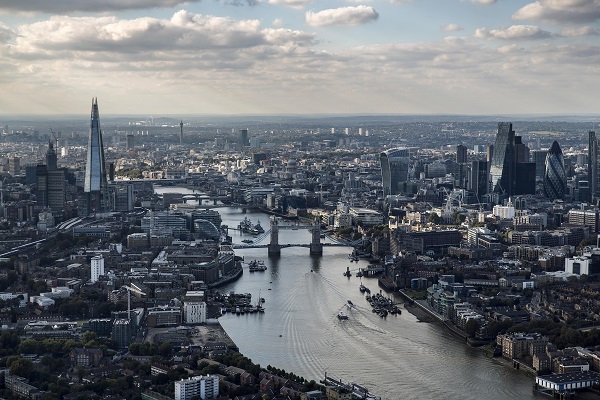“Skyscrapers are destroying London’s skyline, it will soon be too late,” says campaigner Barbara Weiss
London’s great skyscraper debate is as divisive as the Tory vs. Labour battle.
One look at Twitter and you’ll see hundreds of tweets ridiculing and mocking the skyscrapers that dot London’s skyline.
A good example of that is the 72-storey “Skinny Shard” in London that caught the ire of campaigners who argued that the skyscraper is a “totally undemocratic way of transforming their neighbourhoods”.
Following the protests, the developer behind the Paddington skyscraper promised the cut the heights of the skyscraper.
But why do Londoners hate skyscrapers so much? We spoke to Barbara Weiss, co-founder of The Skyline Campaign:
1. Skyscrapers are destroying the London skyline
Weiss’s first big criticism for London getting new skyscrapers is that it’s destroying the historic fabric of the capital.
She said: “London is a unique city, one of the best loved in the world. It has a unique character, which has been forged over centuries. This can clearly be seen in its varied architecture, its monuments and its diverse neighbourhoods.
“While skyscrapers might be appropriate in some areas of London, they do not sit comfortably in and amongst the fine grain of the city’s most historic fabric. They are destroying the skyline, views and character of the city – once and for all.
“Despite many people ignoring this fact, London still has a lot of brownfield land that could and should be developed with medium-rise [six–eight storeys] buildings to deliver the density and the housing we require.
“Skyscrapers should be a ‘last resort’ – and be of exceptional architectural quality, which is sadly not the case at the moment.”
2. “Ghettos for the rich”
Every time a new building proposal is put on the table, “skyscrapers transform neighbourhoods” is the USP that all developers shout from rooftops.
According to Weiss, skyscrapers towering over low-rise residential streets mostly feel “threatening, and alter forever the perception one has of a neighbourhood”.
She said: “In this current boom of tall buildings, the units in towers are only affordable for the very wealthy; they are conceived as ghettos for the rich, often however built in less wealthy neighbourhoods, where they do not contribute to the community. Many flats will be left empty, and few residents will use local businesses.”
3. Lack of transparency
Weiss argues that authorities haven’t been transparent regarding their intentions to build skyscrapers. This is leading to more and more opposition groups forming, as more and more planning applications are submitted to the various councils.
“In recent years there has been a shocking lack in transparency on the part of the Greater London Authority and the boroughs regarding the intention to build so tall, Weiss said. “Many londoners are waking up now to what is happening in their areas and are horrified, also feeling that the democratic process has failed them”
4. Skyscrapers do not meet housing needs
The whole premise of the Skyline Campaign is that these new towers don’t meet financial needs.
A mission statement on their website reads: “Most of the proposed towers are not vital to London’s prosperity and financial wellbeing. The majority are residential, but they are neither essential to meeting housing needs, nor the best way to achieve greater densities. Their purpose is more to create investments than homes or cohesive communities. They have the potential to cause permanent damage to the city’s urban fabric and to its global image and reputation.”
5. The “no space” myth
London’s population is going through the roof but the argument that there’s dearth of office space doesn’t quite add up.
On average only 39% of office space is utilised, according to research by workplace management company Condeco Software.
Paul Statham, founder and CEO of Condeco Software, says: “We work closely with organisations of all types and sizes to understand their workplace needs, almost always finding that they are not using their office space effectively.
“Although there is continued pressure on the property market in London, there is room within the city’s existing skyscrapers for increased capacity. Some firms are making the decision to move to bigger premises when in fact they aren’t making the most of their existing real estate, and this demand is putting an even higher premium on London’s commercial property.
“We heard at the beginning of the year that London is now the most expensive city in Europe – and the second most expensive in the world – in which to build. Before simply building more skyscrapers in this costly market, businesses can make efforts to investigate the usage of their current space. Advanced workplace technology which provides real-time data on occupancy is now more available than ever to businesses looking to make space efficiencies.
“This is a simple step to address the on-going challenges of the commercial property market in London.”
The solution to London’s skyscraper problem, according to Weiss
“The new mayor should impose an immediate freeze on new planning consents for additional buildings above 20 storeys. This in order to run a city-wide consultation regarding whether London should be continuing with building tall, and if yes, how and where.
“We need a new, strong vision for London’s built environment, and a precise and detailed masterplan for the city as a whole to replace the current piecemeal scattergun decisions that are destroying our much-loved capital city. We are at a watershed moment; it will soon be too late.”
Now read:












Leave a Comment